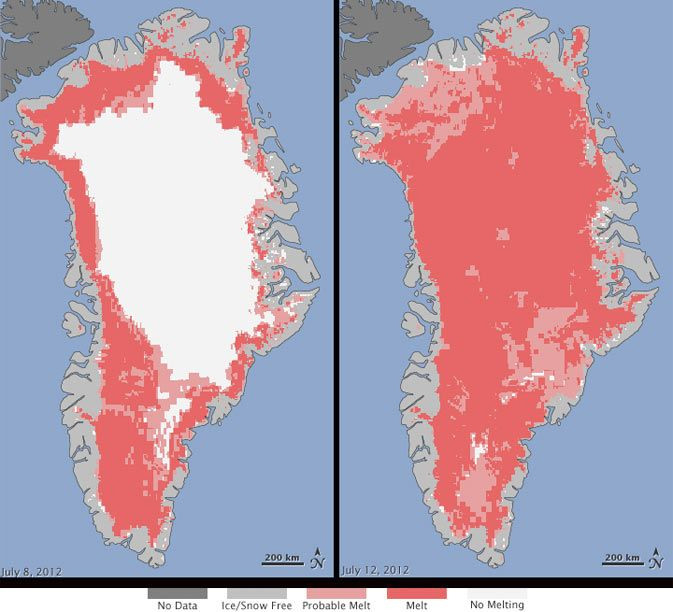
You might want to start reducing your carbon foot print as NASA and the European Space Agency (ESA) found that combined rate of melting for the ice sheets covering Greenland and Antarctica has increased during the last 20 years.
Researchers for 26 labs found that the ice sheets are losing more than three times as much ice each year (equivalent to sea level rise of 0.04 inches or 0.95 millimeters) as they were in the 1990s. The melting ice sheets are said to account for one-fifth of all sea level rise over the 20-year survey period - with the rest caused by the thermal expansion of the warming ocean, melting of mountain glaciers and small Arctic ice caps, and groundwater mining.
"Both ice sheets appear to be losing more ice now than 20 years ago, but the pace of ice loss from Greenland is extraordinary, with nearly a five-fold increase since the mid-1990s," research scientist Erik Ivins of NASA's Jet Propulsion Laboratory in Pasadena, Calif. Shepherd Ivins said. "In contrast, the overall loss of ice in Antarctica has remained fairly constant with the data suggesting a 50-percent increase in Antarctic ice loss during the last decade."
NASA said the the rate of ice sheet losses is consistent with those reported in 2007 by the Intergovernmental Panel on Climate Change (IPCC).
The report said the new estimates are more than twice as accurate because of the inclusion of more satellite data and confirm both Antarctica and Greenland are losing ice.
NASA said the new study puts it in a position to tell people with confidence how Earth's ice sheets have changed, and to end the uncertainty that has existed for years.
© 2025 Latin Times. All rights reserved. Do not reproduce without permission.




